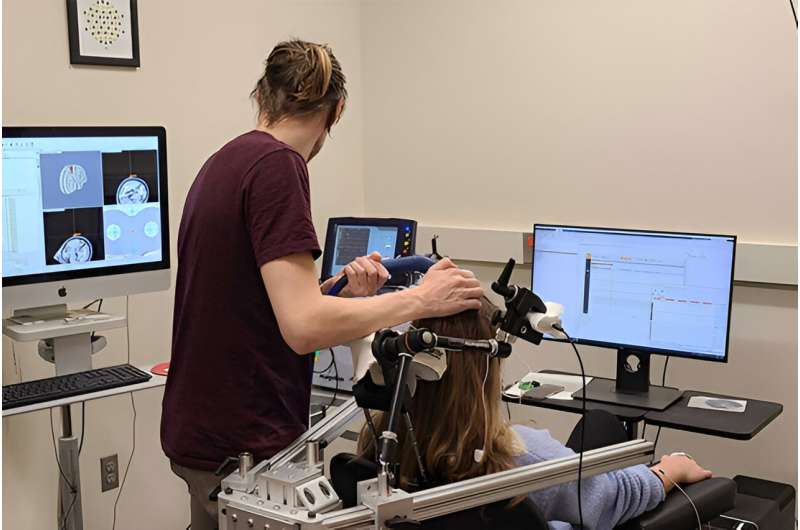This article has been reviewed according to Science X's editorial process and policies. Editors have highlighted the following attributes while ensuring the content's credibility:
fact-checked
trusted source
proofread
New study reveals breakthrough in understanding brain stimulation therapies

For the first time, researchers at the University of Minnesota Twin Cities showed that non-invasive brain stimulation can change a specific brain mechanism that is directly related to human behavior. This is a major step forward for discovering new therapies to treat brain disorders such as schizophrenia, depression, Alzheimer's disease, and Parkinson's disease.
The study was recently published in Nature Communications.
Researchers used what is called "transcranial alternating current stimulation" to modulate brain activity. This technique is also known as neuromodulation. By applying a small electrical current to the brain, the timing of when brain cells are active is shifted. This modulation of neural timing is related to neuroplasticity, which is a change in the connections among brain cells that is needed for human behavior, learning, and cognition.
"Previous research showed that brain activity was time-locked to stimulation. What we found in this new study is that this relationship slowly changed and the brain adapted over time as we added in external stimulation," said Alexander Opitz, University of Minnesota biomedical engineering associate professor. "This showed brain activity shifting in a way we didn't expect."
This result is called "neural phase precession." This is when the brain activity gradually changes over time in relation to a repeating pattern, like an external event or in this case non-invasive stimulation. In this research, all three investigated methods (computational models, humans, and animals) showed that the external stimulation could shift brain activity over time.
"The timing of this repeating pattern has a direct impact on brain processes, for example, how we navigate space, learn, and remember," Opitz said.
The discovery of this new technique shows how the brain adapts to external stimulation. This technique can increase or decrease brain activity, but is most powerful when it targets specific brain functions that affect behaviors. This way, long-term memory as well as learning can be improved. The long-term goal is to use this technique in the treatment of psychiatric and neurological disorders.
Opitz hopes that this discovery will help bring improved knowledge and technology to clinical applications, which could lead to more personalized therapies for schizophrenia, depression, Alzheimer's disease, and Parkinson's disease.
In addition to Opitz, the research team included co-first authors Miles Wischnewski and Harry Tran. Other team members from the University of Minnesota Biomedical Engineering Department include Zhihe Zhao, Zachary Haigh, Nipun Perera, Ivan Alekseichuk, Sina Shirinpour and Jonna Rotteveel. This study was in collaboration with Dr. Jan Zimmermann, associate professor in the University of Minnesota Medical School.
More information: Miles Wischnewski et al, Induced neural phase precession through exogenous electric fields, Nature Communications (2024). DOI: 10.1038/s41467-024-45898-5





















